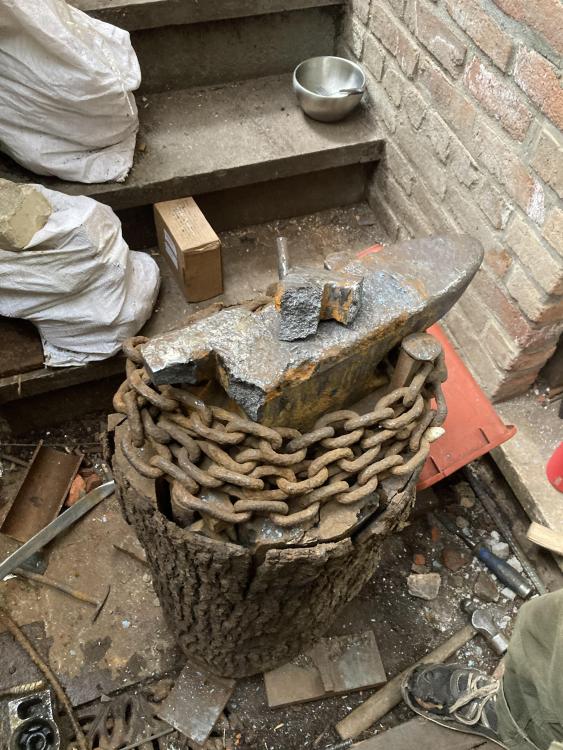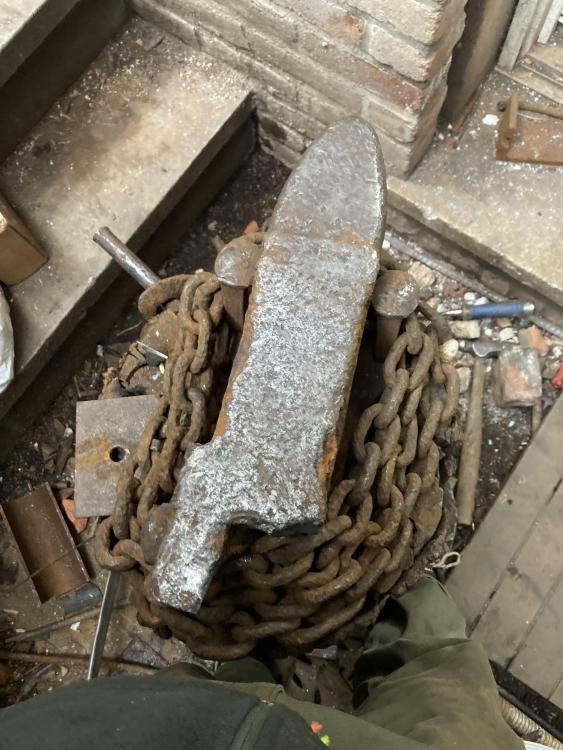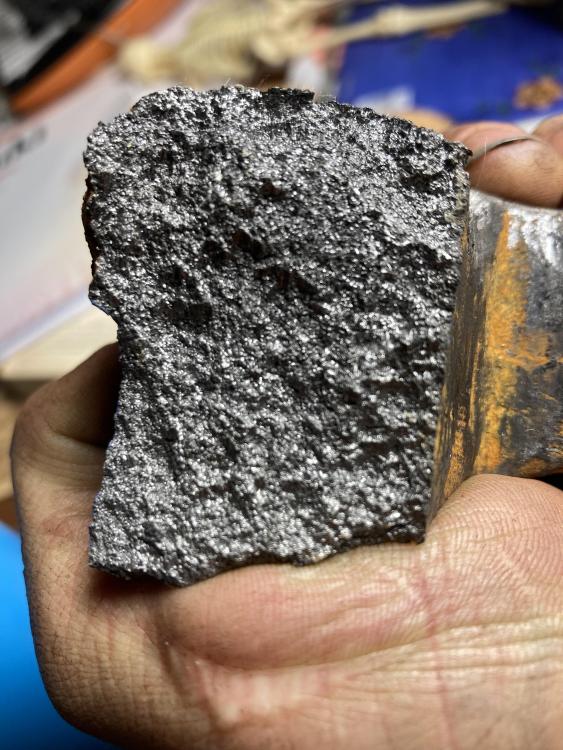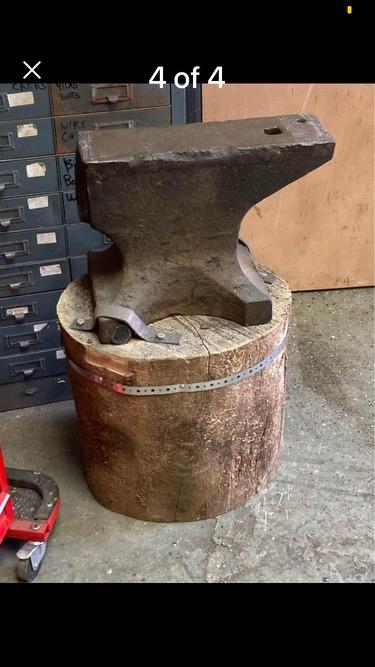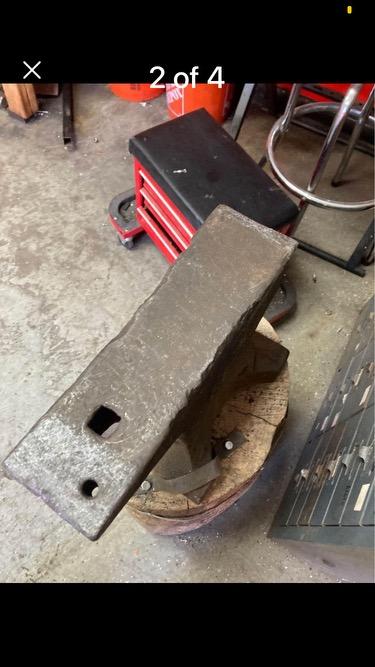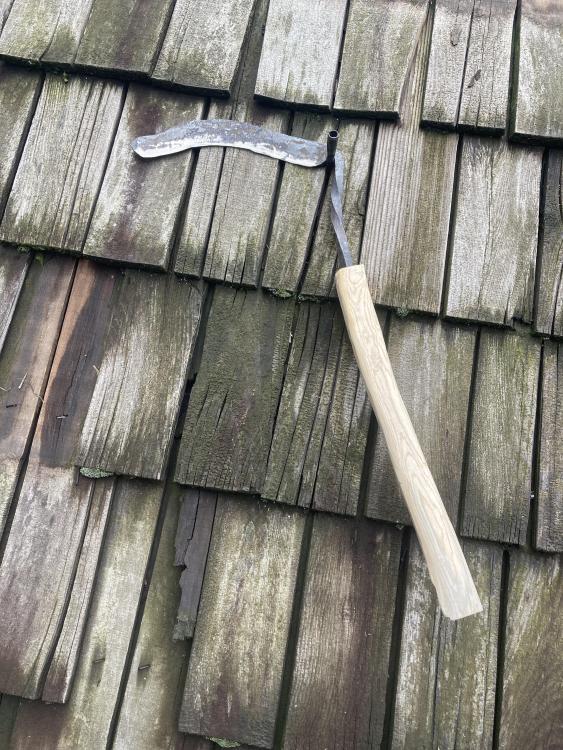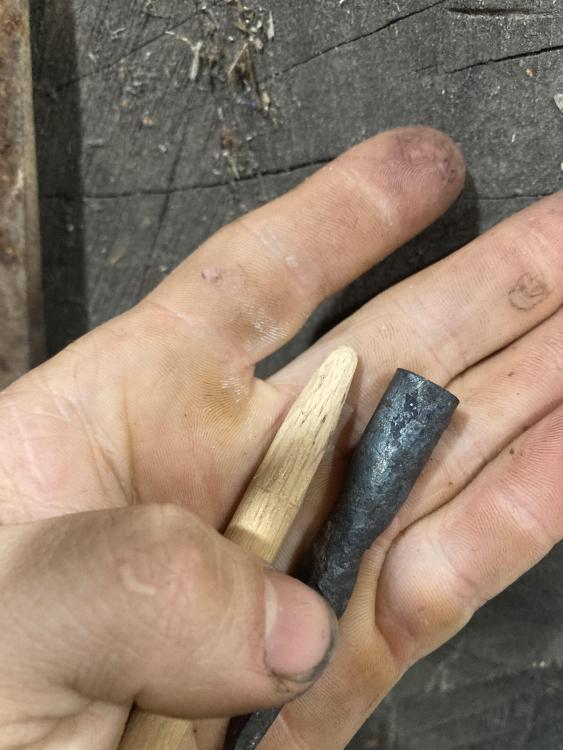
SubterraneanFireForge
Members-
Posts
26 -
Joined
-
Last visited
Content Type
Profiles
Forums
Articles
Gallery
Downloads
Events
Everything posted by SubterraneanFireForge
-
The most useful blacksmithing ideas
SubterraneanFireForge replied to Glenn's topic in Shop Tips n' Tricks
I have a little gas forge that I use now. But before I did I would melt and cast aluminum and zinc in a ladle with progressive amounts of things around it to hold the heat better. id like to get get/make some sort of furnace for casting eventually. -
The most useful blacksmithing ideas
SubterraneanFireForge replied to Glenn's topic in Shop Tips n' Tricks
Make/buy/find the right tongs for what you are doing. It will save you a lot of time and effort and your face for hot flying metal. Also if you are melted something with a propane torch it is very helpful to put a brick or something to cover the top of your crucible or whatever you use the metal. Even just a brick makes a big difference in holding heat. -
bloom from scale.
SubterraneanFireForge replied to bluerooster's topic in Smelting, Melting, Foundry, and Casting
Yeah I’m also curious as to how you are getting that much scale. I’ve been thinking of trying a similar thing with all my lil bits of scrap metal. if it you blooming works out I might have to start hoarding scale to. definitely let us know how it goes and take pictures if you can! -
I didn’t see your post before posting my last one but that makes sense pat that the face of the anvil would be more efficient because of the mass behind it. I don’t think this should matter as much for little things because they don’t require that much force. and efficiency is more limited to how much metal you can can get forwards versus sectioning of metal when doing larger work. again I havet really worked with horns so my opinion is partially theoretical.
-
A benefit to using the horn for drawing out (brought up by someone that has never really done this in there life) but it seems like using a horn instead of the sharp edge of the anvil would result in Les lumpyness that has to be forged down later. well said frosty probably the biggest killier of time resources and tools is, using to big stock so u have to find your hot cut to remove your super long rat tail then you rush it trying to get the cut done in one heat and bonk your hardy tool and have to resharpen it and maybe reface your hammer like learn ing a new song buy effectiveness comes before speed
-
From what all you guys said it sounds like a good anvil to check out hammer and maybe in hand and if all is well that looks well a good anvil to adopt im surprised about how little you guys use your horns. I always thought it was a big part of blacksmithing that I was missing with my anvil blob. thanks for all information! haha my harbor freight served me welll (mostly) for about a year of sledgehammers poor hammer control and probably to cold metal. (I would have definitely picked up a smooth boulder though!) I’m really looking forward to an upgrade. thanks again everyone!
-
Thanks everyone for the input! Unfortunately there are no markings on the side. From everything that all you guys said it seems it’s worth checking it out in person and adopting if everything is good and I don’t find anything better. It’s not the best anvil but it will definitely be a step up from my harbor freight. In the pictures below
-
There’s this 150lb that someone’s selling not to far from me farly worn stump included for 200$ with one big catch IT DOESNT HAVE A HORN. I’m very curious to hear everyone’s thoughts on this if it’s or good deel or not and how important really is a horn? My last cheap harbor freight anvil didn’t really have a horn either so I don’t have much experience with horns. Thank you for your input!
-
Work-hardening a sickle question
SubterraneanFireForge replied to SubterraneanFireForge's topic in Cold Worked Iron and Steel
it looks so funny it’s like someone dropped a anvil on a clay hammer. ill be looking out for stray claw hammers that look like they want to try something new. “…and I don’t want tickle id rather ride motorsickle…” -
Work-hardening a sickle question
SubterraneanFireForge replied to SubterraneanFireForge's topic in Cold Worked Iron and Steel
Thanks Frosty, I’ve found plenty of pictures online of flat, mostly Japanese sickles. some with spike tangs. From what I gather the curved sickles are more for gathering while the flatter sickles are more for just cutting stuff down like when your weeding. I did welcome any general advice about sickles, but my original question was about combining work hardening and heat treating, which I couldn’t find information on in other places. -
Work-hardening a sickle question
SubterraneanFireForge replied to SubterraneanFireForge's topic in Cold Worked Iron and Steel
I just finished temping and sharpening the sickle. it was all forged to finish apart from the last little bit of sharpening. That’s a good point Jhcc I hadn’t thought of that we normally turn over the dirt and sift out the bits of roots and little weeds so it might not matter. a weeding claw might be a fun next project! Gorge I haven’t seen any tangs so small to u know how they would have to mount to a handle??? after watching that video I might have to try making a scythe next. -
Work-hardening a sickle question
SubterraneanFireForge replied to SubterraneanFireForge's topic in Cold Worked Iron and Steel
Thanks for all the information everyone! im making a sickle because I volunteer at a garden and pull mugwort by the hour, so I was thinking a sickle could come In handy and be a fun project that I can forge and test. The springs I got are pretty new but I’m just curious. would normalizing a piece of steel or heating it to forge welding temperature before working it fix any micro fractures. -
Work-hardening a sickle question
SubterraneanFireForge replied to SubterraneanFireForge's topic in Cold Worked Iron and Steel
Thanks for the information Gorge. I’m always surprised at how fast people respond on this forum. Having a lo carbon practice piece and a high carbon take 2 sounds like a good idea. i recently acquired a car springs that I’m assuming would be good for a second shot. the yellow blade/ blue spine temper is a good point I’ll definitely try to temper it like that. Thanks again! -
Hi I’m not sure if topic should be in cold working or quenching and tempering so if this is in the wrong place please say so. I’m forging a sickle out of rebar this particular piece seems to have some carbon if I make a piece thin, quenched it in cold salty water and give it a bonk it will snap. im thinking about work-hardening it my question is would u work harden and quenched and sneak a piece, the same proses as with carbon high carbon steel? minus the normalization? Or world u just forge it into a black heat and call it done? Any general advice about sickles is also welcome! Thanks!
-
If you hang it or hammer with it, it makes me think of my grandfather’s tools that he left behind. I didn’t get much of a chance to meet him before he passed but many of his tools are in working or nearly working condition. I can connect with him tho we are worlds apart by using his tools. This is part of the reason it’s important to buy and make good tools because the tools you use will be the tools your children use and maybe your grandchildren if you are lucky. That’s a beautiful hammer that’s what I want mine to look like when I pass.
-
Forging Arrow Heads
SubterraneanFireForge replied to DevanMcDavitt's topic in Spears, Arrows, Pole arms, Mace/hammer etc.
Hi Gorge, I just flatten out a round making sure that it has an even width like a little rectangle. I don’t use any glue or pin as long as my sockets are around a inch long I don’t have a problem I’ve even stuck them in a vise to see if I could pull the head of and I can’t. its really important that the head fits the inside of the socket with no dead space. happy forging! -
forge welding mild steel
SubterraneanFireForge replied to evfreek's topic in Blacksmithing, General Discussion
Sorry I missed that and sorry to hear that. -
forge welding mild steel
SubterraneanFireForge replied to evfreek's topic in Blacksmithing, General Discussion
Evfreek the coal that you were using in the other shop is probably bituminous coal, it burns hot and fast a gives off tons of sulfur especially when igniting. What do you normally use as fuel? -
Forging Arrow Heads
SubterraneanFireForge replied to DevanMcDavitt's topic in Spears, Arrows, Pole arms, Mace/hammer etc.
I’ve had much more success attaching more cylindrical than conical shaped sockets. when I want to mount a head I just carve of some of the end of the arrow shaft with a pocket knife till it looks like the inside of the socket I’ll lightly place the socket on a couple times to make sure I’m on the right track. Then shove the head on and tap the back end off the arrow with a rubber mallet I attached my heads before cutting nocks from this reason. Then once the arrow is fully assembled I’ll lightly shoot it head on into a stump. Realized after I wrote this, that this post is old. Devan I hope u have had luck with your arrowheads and can fully enjoy the wonderful control and luxury of forging your one heads! -
Sorry — this is long: I live in the city and work in my stair landing between the yard and bacement. Not xxxxxx xxx the neighbors with a lot of noise is a big part of the equation to continue make things. I have a small gas forge and cast Harbor Freight anvil and recently acquired a large metal wedge I’ve been using as a spike anvil. CAST ANVIL My cast anvil is securely fastened to a stump atop flat metal slabs and is wrapped in an old climbing rope with bits of short scrap metal intertwined in it to weigh it down. I’m going to get a thick chain to replace the rope. I’ve also heard of people placing a sheet of silicone between the stump and anvil but I’m worried about losing rebound. Should I be? Has anyone tried this? I’ve also heard of people using large magnets. Does this do anything? THE FORGE The sound of the forge itself is something I couldn’t find a lot of information on addressing. Would a higher quality forge or more insulation do a better job insulating the sound as well as the heat? Is there some way to muffle the rumble or make it travel less far? SPIKE ANVIL The spike anvil, while having beautiful sharp edges, rings like a bell and I’m not sure what to do about it apart from wrapping it in chain or the rope from the other anvil. It’s currently about a quarter of its length into a stump. Would hammering it more deeply into a stump make it quieter? INSULATION? Is there some sort of insulation I could line the walls of my little forge zone to stop the sound from traveling? If anyone has any advice or suggestions for noise cancellation I’d love to hear them. Thank you and happy holidays!
-
Rebar crossbow??
SubterraneanFireForge replied to SubterraneanFireForge's topic in Blacksmithing, General Discussion
George after what u said I took some bolts and nails I had gotten from a demolished building and sawed and snapped them and they looked like wood!! I had wrought iron right under my nose! Sorry if this is redundant but will quenching in oil ad carbon to construction grade steel mild steel or wrought iron? Thanks for all the feedback. -
Rebar crossbow??
SubterraneanFireForge replied to SubterraneanFireForge's topic in Blacksmithing, General Discussion
Wow so many replies! Thanks! it seems like waiting to stumble across a better piece of steel is the way to go. Just curious for others projects can you ad notice able amounts of carbon to rebar by case harden or oil hardening it? that’s a generous offer Billybones I live in New York home of tons of rebar. -
Hi I’m new to this forum and pretty new to blacksmithing as well. a crossbow is something I wanted to make sense I started forging. I was wondering how rebar would work for this application. I Know a leaf spring or other spring steel would work better but right now I have rebar and Im probably going to try it anyway and at least make a wall hanger or a crossbow shaped piece of steel. if anyone has advice on quenching ,tempering, annealing demotions ,forging, grinding ect I’d appreciate it.
-
it’s beautiful! Did u forge in or grind the taper? and what was the length and thickness and draw weight I’ve never made a steel crossbow but I’ve made a couple yew ones and string stretch has been an issue. u can tell if the string is if you’re brace hight decreases. whats the string made of?
